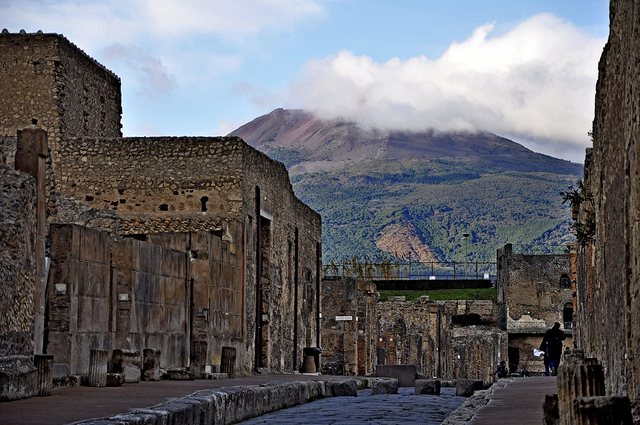
The Ruins of Pompeii may get the attentions of thousands of tourists, but one nearby attraction that is equally fascinating are the Ruins of Herculaneum. Despite the massive volcanic eruption that destroyed the city of Pompeii, Herculaneum’s original structure largely remained intact, and this is the main reason it is such a captivating place to visit.
When Mount Vesuvius erupted and caused the destruction of Pompeii, the semiliquid mud the volcano emitted covered the most items, textiles, furniture and other wooden structures of Herculaneum; coincidentally making it a sealed tomb, which protected such objects. Thus, marveling at Herculaneum today is like being transported back in time to when the Roman Empire flourished. .
The excavation of the site first started in 1738 under the direction of King Charles of Bourbon. These days, visitors to Herculaneum can see more than one third this ancient landmark. Herculaneum is specifically situated 50 feet below the modern town of Ercolano. It is surrounded by greenhouses covering several acres. This has made the area a prominent flower-growing region in Europe in the last decade. Because the site receives less tourists than Pompeii; you will have more room to explore the areas at a more leisurely pace.
The houses and buildings that you will see at Herculaneum are varied. Some were used for commercial and civic purposes. Most of these buildings are open so you can also view their interior. One of the most renowned sections of Herculaneum is the Villa dei Papiri (Villa of Papayri). This structure can be found in the excavation area at the corner of the complex. It houses an impressive 1,800 carbonized papyrus scrolls, which led scientists to believe that the building had been a library or a study center. Although not all of Villa dei Papiri is fully excavated, you can see the virtual reproductions of the building in full color when you visit the MAV ( Museo Archeologico Virtuale) museum.
Other famous buildings in the complex are Casa del Nettuno ed Anfitrite (House of Neptune and Amphitrite), known for its delicate decorations and still-bright wall mosaic; and Casa del Bel Cortile (House of the Beautiful Courtyard), known for its storerooms where inhabitants took refuge from the eruption. If you want to know how the Romans travelled in ancient times, stop over at the House of the Ship. As the name suggests, it is home to a small Roman ship, whose wooden structure as well as equipment are well-preserved. Other must-see structure include the Baths, Gymnasium, Samnite House, College of the Augustales, and Casa del Tramezzo di Legno (House of the Wooden Partition).
Take note that there is no food or water being sold at the Herculaneum Archeaological Site, so make sure to bring refreshments with you. At the entrance, you can pick up a free map called Pianta degli Scavi Archeologici di Ercolano, which can effectively guide you through the entire complex that exudes a grid layout. You also have the option to purchase the audio guide to enhance your tour experience. Purchasing the Pompeii pass allows you full access to the Herculaneum ruins. The site is open daily from 8:30 am to 7:30 pm from April 1 to October 31. On other months of the year, it closes early at 5:00 pm, allowing the last guest entrance at 3:30 pm.
Article Source: http://EzineArticles.com/?expert=Nagib_Georges_Araman



